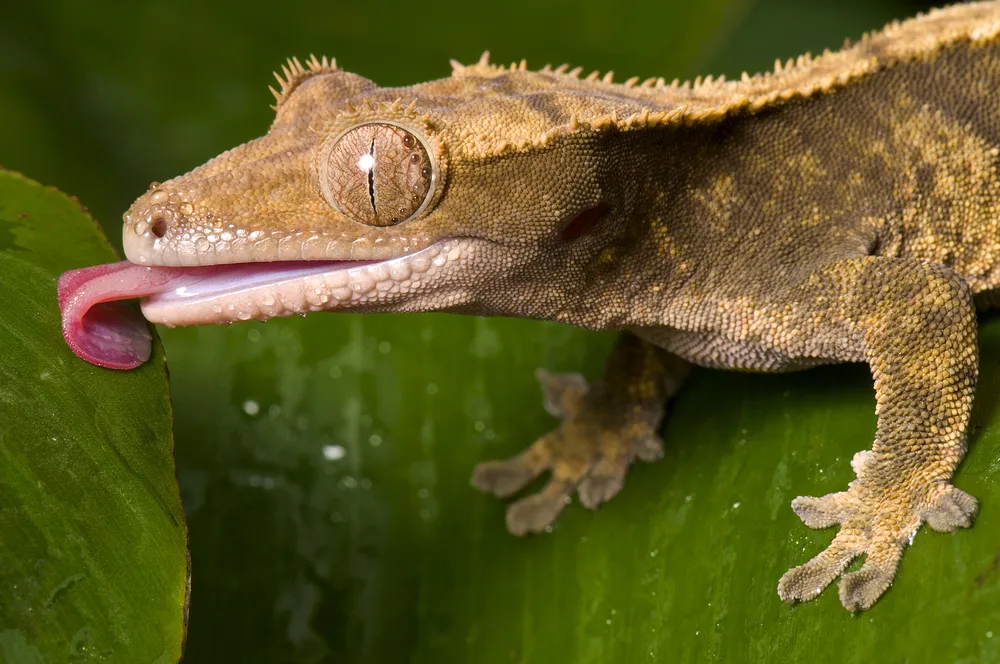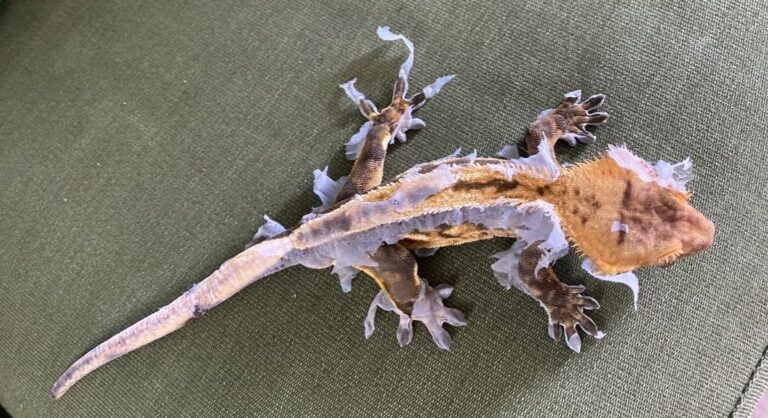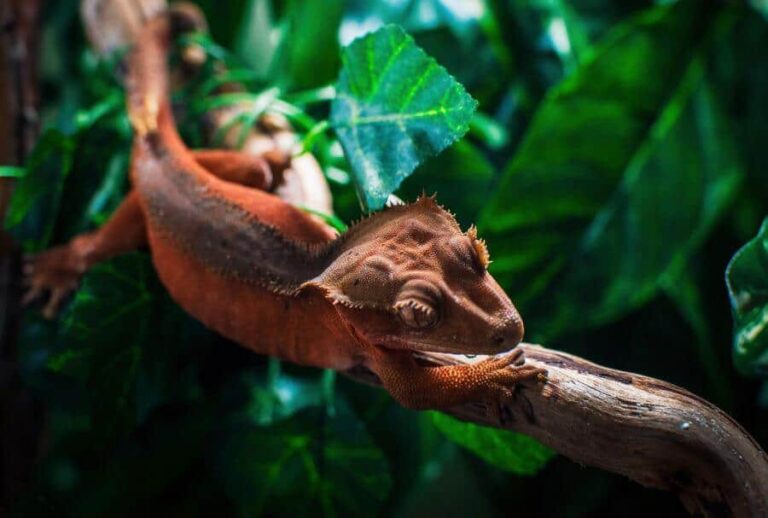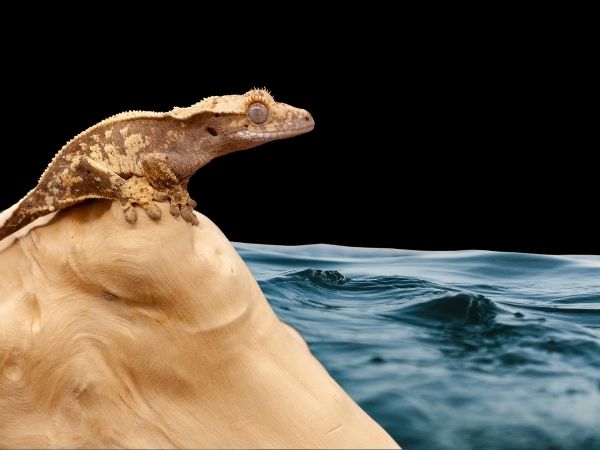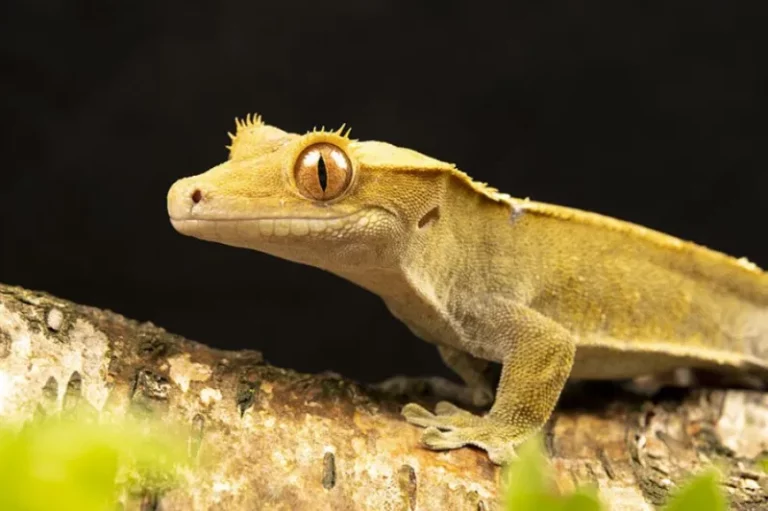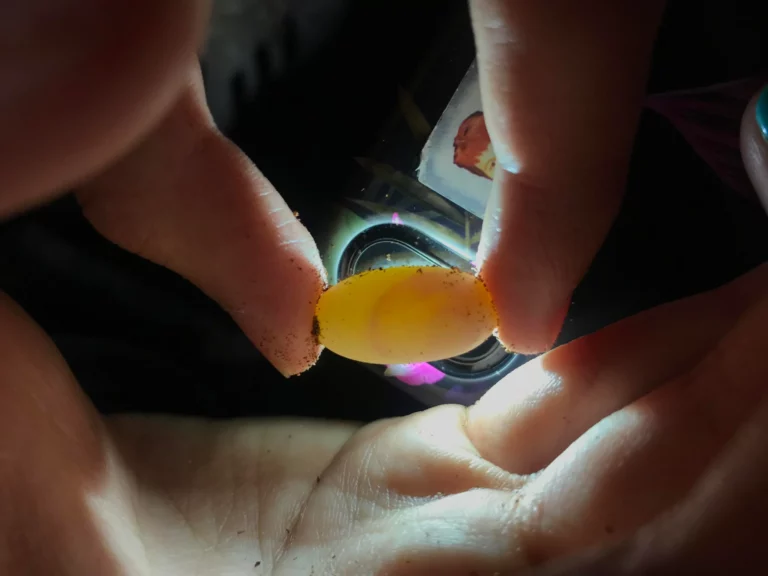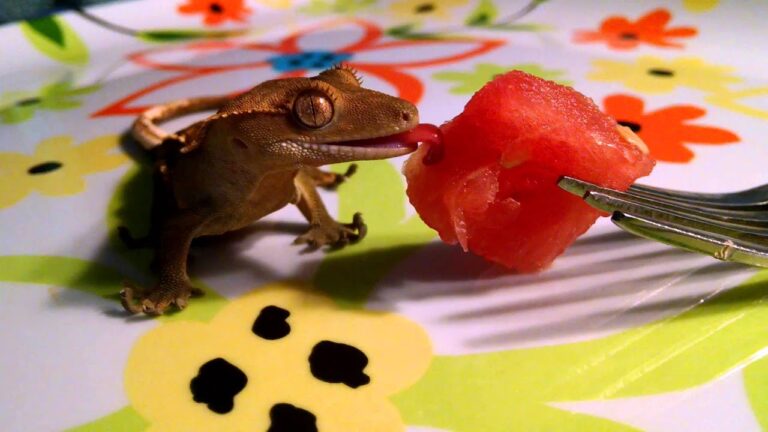How Fast Do Crested Geckos Grow?
When I first brought home my crested gecko, I was captivated by its tiny stature and vibrant colors. But as a curious pet owner, one question constantly echoed in my mind: “How fast do crested geckos actually grow?”
As I embarked on this journey of discovery, I unearthed a fascinating story of growth that I’m excited to share with you.
However, Baby crested geckos grow slowly, adding just 1 gram per month for the first six months. Then, as teenagers, they grow faster and can gain up to 20 grams in the next six months. When they become adults at around 1 to 2 years old, they typically weigh between 25 to 55 grams.
So let’s set out on this expedition and discover the secrets of crested gecko growth together.
Factors Influencing Crested Gecko Growth Rate: Nurturing Optimal Development
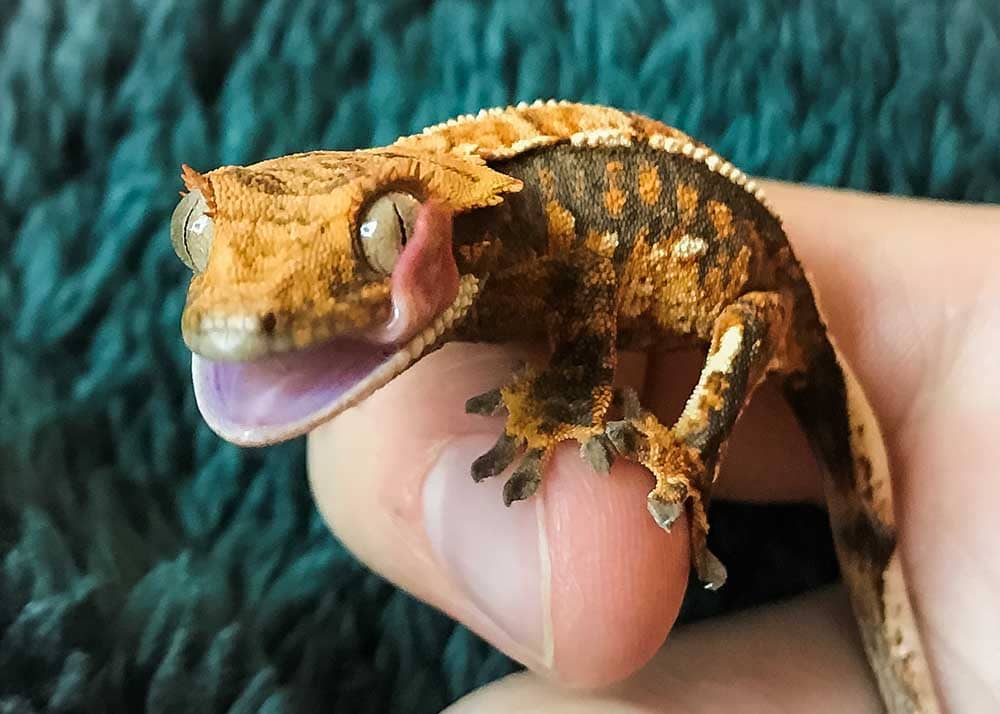
Diet:
A well-rounded, nutritious diet is the cornerstone of healthy crestie growth. Poor nutrition not only stunts their development but can also lead to severe conditions like metabolic bone disease. They are omnivores, requiring a mix of fruits and live insects such as crickets, roaches, and small locusts.
Further, Gut-load feeder insects with a balanced mix of greens and vegetables 24-48 hours before feeding. Supplement with calcium, vitamin D3, and multivitamins 2-3 times a week. Commercial crested gecko diet mixes are also available, offering a convenient way to ensure a balanced diet.
Temperature and Humidity Levels:
Maintaining optimal environmental conditions is paramount. Inadequate temperatures can trigger a range of issues, from digestive problems to diminished immunity and energy levels. Aim for ambient temperatures between 71ºF and 79ºF to sustain steady growth.
In addition, Bear that excessive cold can induce brumation and slow down your crestie’s development. Equally crucial is humidity, which should hover around 70%, with brief drops to 50% to discourage bacterial and fungal growth. Enhance humidity through methods like misting, shallow water bowls, moisture-retentive substrates, or even the use of a crested gecko waterfall.
Enclosure Size:
The misconception that larger enclosures equate to faster growth is debunked. A small one thrives better in a compact space, as it can easily locate sustenance without undue stress. Begin with a 15-gallon enclosure until they reach approximately 20 grams in weight, then transition to a 15 to 30-gallon habitat.
As adults, they will require more room. If you opt for a larger enclosure, consider incorporating two feeding spots to facilitate easy access to nourishment.
Changes to Habitat and Diet:
Geckos may experience a temporary slowdown in growth when transitioning to a new enclosure. A period of acclimation, which can last up to two weeks, is normal. Minimize handling during this phase to help your crestie settle comfortably.
Also, be aware that a shift in diet from what the breeder provided can temporarily affect growth rates. Be patient; they will adjust over time.
Genetics:
The genetics of your crested gecko’s parents and their growth history significantly impact your pet’s development. Keeping a meticulous growth record can offer valuable insights, particularly if you plan to breed crested geckos in the future.
Parasites:
Parasites can be a growth impediment. If you notice stunted growth despite providing optimal care, it may be wise to consult a veterinarian for a fecal sample examination to identify and address any potential parasite issues.
Bullying from Other Crested Geckos:
Social dynamics matter when housing multiple cresties. Never house two male cresties together due to territorial aggression. Multiple female cresties can coexist if of similar size and provided ample space. Breeding setups may involve housing both but must be done with care. Separate any crestie showing signs of bullying to support healthy growth.
Sunlight Exposure for Optimal Growth
To ensure your crested gecko thrives and grows at its best pace, adequate sunlight exposure is essential. However, it’s crucial to exercise caution and avoid direct sunlight, which can lead to heatstroke for your pet.
Instead, aim for a balanced day and night cycle that incorporates both sunlight and darkness. This is particularly important because crested geckos are nocturnal creatures, predominantly active during the night. Maintaining a consistent light-dark cycle helps them establish a healthy sleep-wake pattern, which is vital for their well-being.
Tail Dropping:
Tail loss is a unique feature of cresties. While they can drop their tails without harm, it impacts their size. They without tails remain smaller, as they lose the ability to store fat in their tails. Ensure a stress-free environment to minimize tail dropping, as sudden fright or stress can trigger this defense mechanism.
Growth chart :
| Age | Weight | Body Length with Tail |
| Hatchling | 1.5 – 2 grams | 2.5 – 3 inches |
| Baby (2 months) | 3 grams | 3 – 4 inches |
| Juvenile (3 months) | 4 grams | 3 – 5 inches |
| Juvenile (4 months) | 5 grams | 4 – 6 inches |
| Juvenile (5 months) | 7 grams | 4 – 6 inches |
| Juvenile (6 months) | 9 grams | 5 – 7 inches |
| Juvenile (9 months) | 16 – 35 grams | 6 – 9 inches |
| Juvenile transitioning to adult (12 months) | 35 – 50 grams | 9 – 16 inches |
| Adult (18-24+ months) | 35 – 55+ grams | 9 – 16+ inches |
Fostering Healthy Weight Gain in Underweight Crested Geckos
1. Nutrient-Rich Diet: Ensure your crested gecko is receiving a balanced and nutritious diet. Offer gut-loaded insects like crickets, roaches, and small locusts 3-4 times a week. These insects should be well-fed with nutritious foods before being offered to your gecko.
2. Occasional High-Fat Treats: Supplement their diet with high-fat insects like waxworms or superworms as an occasional treat, about 1-2 times a week. These insects can provide an extra boost of calories.
3. Identify Signs of Underweight: Keep a close eye on your crested gecko’s body condition. Signs of being underweight include slender legs and body, visible rib and hip bones, a lack of calcium sacs, and a flat belly.
4. Address Underlying Causes: Investigate the underlying causes of your crested gecko’s underweight condition. Ensure it is free from parasites or illnesses and that the enclosure provides an optimal environment for its well-being.
5. High-Protein Diet Mix: Consider using a high-protein diet mix, especially ones designed for breeder geckos. Mix one part of the diet powder with 2-3 parts water to create a smooth consistency. Adjust the water amount to match your gecko’s preference.
6. Hand-Feeding as a Last Resort: If your crested gecko continues to refuse food, you may need to resort to hand-feeding. Use your hand or specialized rubber-tipped feeding tongs to offer food gently. However, never force-feed your crested gecko; if the problem persists for more than two weeks, consult a veterinarian for professional guidance.
7. Special Attention to Baby Cresties: Baby crested geckos require extra care. If a baby crested gecko goes without eating for more than a week, immediate intervention is necessary due to their smaller size and heightened risk of malnutrition and death.
Managing Overweight Crested Geckos: A Comprehensive Guide
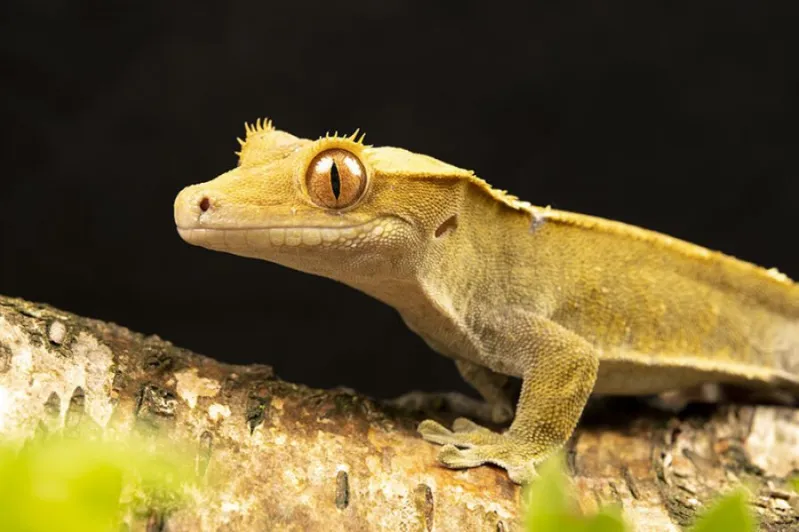
If you have an overweight crested gecko, it’s essential to take proactive steps to help them shed those extra pounds and maintain a healthier physique. Here’s a structured approach to address the issue
- Identifying an overweight crested gecko is crucial. Look for signs such as chubby legs and excess fat around the head, neck, or stomach.
- Overweight cresties are more vulnerable to health issues, including heart disease, infertility, and difficulties with shedding.
- To initiate weight loss, you’ll need to adjust your gecko’s diet gradually. This gradual transition prevents your pet from going hungry and minimizes stress.
- Use a small kitchen scale to track your crested gecko’s weight throughout the dieting process. This helps you monitor progress and ensure the process is gradual and safe.
- Start by offering your gecko one fewer insect than usual for three consecutive feedings. Then, progressively reduce the number of insects by one for every three feedings. Continue this pattern until your crestie begins to lose weight.
- During the diet, avoid feeding your crested gecko high-fat insects like waxworms or superworms, as these can contribute to weight gain.
- Once your gecko reaches a healthy weight, reintroduce high-fat insects as treats, but limit them to 1-2 times per week.
- Regularly monitor your c weight, even after they’ve reached their ideal weight. This ensures you don’t inadvertently overfeed in the future.
- Consider offering your crested gecko a larger enclosure that encourages physical activity. Adequate exercise can help maintain a healthy weight.
Accurately Measuring Your Gecko’s Weight: Practical Methods
Reptile enthusiasts employ straightforward techniques to precisely measure the weight of their geckos. Here are two reliable methods for ensuring an accurate measurement:
1. Cup or Bowl Method: Begin by weighing an empty cup or bowl. Then, gently encourage your gecko to climb inside. After your gecko has settled, weigh the cup or bowl with your gecko inside. Subtract the initial weight of the container from the combined weight to determine your gecko’s weight.
2. Tupperware Container Approach: Utilize a Tupperware container equipped with a lid. Allow your gecko to enter the container, and gently close the lid to prevent escape. Ensure the lid is not sealed shut, allowing for sufficient airflow. Proceed to weigh the container with your gecko inside.
FAQs
How do I keep track of my crested gecko’s growth?
To monitor your crested gecko’s growth, regularly weigh it on a digital kitchen scale and record the measurements. You can also visually compare its size to reference photos of crested geckos at various stages of growth.
How long does it take for a crested gecko to get bigger?
Crested geckos typically start growing slowly, gaining about 1 gram per month in their early months. Their significant growth occurs during their teenage years, and they reach their adult size at around 1 to 2 years of age.
How can I make my crested gecko grow faster?
Ensuring a proper diet, maintaining suitable temperature and humidity levels, and providing a stress-free environment can help support healthy growth in crested geckos. However, their growth rate is primarily determined by genetics.
How fast do geckos grow?
Crested geckos, specifically, have a relatively slow growth rate during their early months, followed by a faster growth phase during their teenage years. The exact rate can vary between individual geckos.
How big are crested geckos without a tail?
Crested geckos typically measure between 7 to 9 inches in length, excluding their tails. However, the tail itself can be around 1 to 2 inches in length, depending on the individual.
Final words :
From what I’ve learned, crested geckos have quite an interesting growth journey. When they’re little hatchlings, they grow slowly, adding just about 1 gram to their weight each month during their early months. But here’s where it gets fascinating: once they hit their teenage years, their growth rate really kicks into high gear. In just six months, they can put on as much as 20 grams!
Now, if you’re thinking of having one of these amazing creatures as a pet, there are some important things to keep in mind. During their slow growth phase in those first six months, you want to make sure their environment is just right. That means maintaining a stable and cozy space with the correct temperature and humidity levels. This sets the stage for their initial development.
In a nutshell, they can be relatively low-maintenance pets, but giving them the right care and attention at each stage of their growth ensures they not only survive but thrive, reaching their full and healthy adult size.

